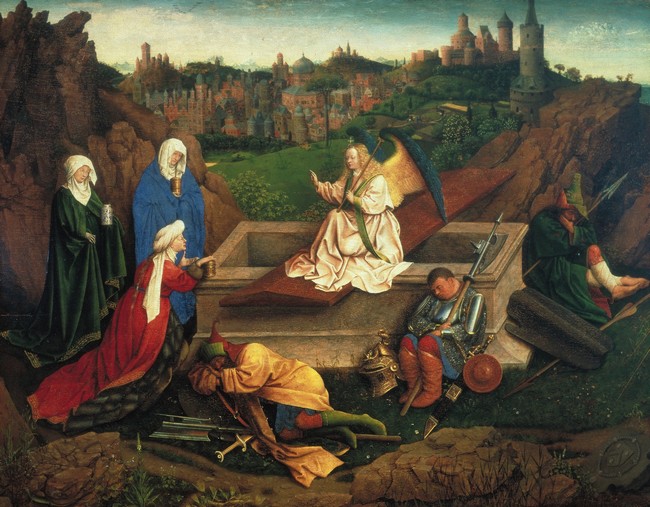The exhibition ‘The Road to Van Eyck’ with masterpieces of Netherlandish, French and German painting around 1400 will be shown at Museum Boijmans Van Beuningen this autumn. Extremely valuable and fragile works by Europe’s most important painters of the period, including Jan van Eyck, are coming to Rotterdam from collections in the United States and Europe.
Very few paintings from the period around 1400 have survived. Art from the Low Countries from this period is especially scarce due to the iconoclastic attacks of the Reformation. This autumn Museum Boijmans Van Beuningen is crossing national and linguistic boundaries to present a unique exhibition of the art of the late Middle Ages in what is now the Netherlands, Belgium, Northern France and Germany. ‘The Road to Van Eyck’ shows how Jan van Eyck (Maaseik ?, c.1390 - Bruges 1441) was inspired to develop his revolutionary, realistic style, as exemplified by his masterpiece ‘The Lamb of God’ of 1432. Through his visionary artistic insights, Van Eyck gave his contemporaries a glimpse of paradise. A large number of the works in the exhibition are being loaned by the museum’s partner in this project, the Gemäldegalerie, Staatliche Museen zu Berlin. Because of the high costs involved and the fragility of the works, ‘The Road to Van Eyck’ will be shown only once, exclusively in Rotterdam
International exchange
Around 1400 there were numerous innovations in painting, developed by artists such as Van Eyck. These art works, many of them lost, provided the essential foundations that Van Eyck and subsequent generations built upon. Artistic ideas, model books, art works and artists travelled extensively throughout Europe. The princes and other local rulers responsible for the most prestigious commissions were in constant contact with each other. The large centres of international trade, such as Paris, Amsterdam and Cologne, also contributed to the exchange of ideas and objects. For this reason, it is often impossible to determine whether a work was made in the Low Countries, France or Germany. The art of the period from around 1390 to 1430 is therefore often referred to as ‘International Gothic’.
Paintings
The exhibition brings together dozens of art works that provided inspiration for Jan van Eyck and his contemporaries. The core of the exhibition is made up of panel paintings, most of them small in format, but also some larger altarpieces. The remainder of the exhibition will comprise drawings, miniatures, tapestries, and decorative works in gold and silver. The highlight of the exhibition is formed by no fewer than seven works by Van Eyck.
Private funding
The exhibition has been made possible by a private fundraising initiative, which so far has raised 82,000 euros. The restoration of the works by Van Eyck in the museum’s collection has also been funded by a private donor.
Catalogue
The exhibition will be accompanied by a richly illustrated catalogue, edited by the exhibition’s curators: Friso Lammertse, curator at Museum Boijmans Van Beuningen, and Stefan Kemperdick, curator at the Gemäldegalerie in Berlin.
The exhibition has been made possible by Robeco, the Turing Foundation, Ploum Lodder Princen and several cultural foundations.
| 

